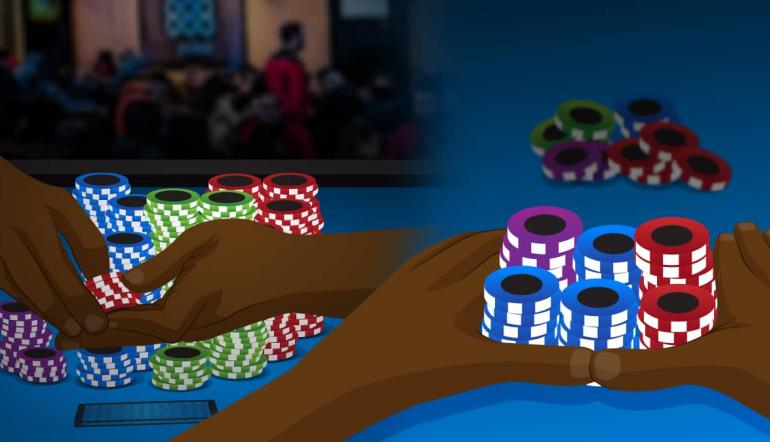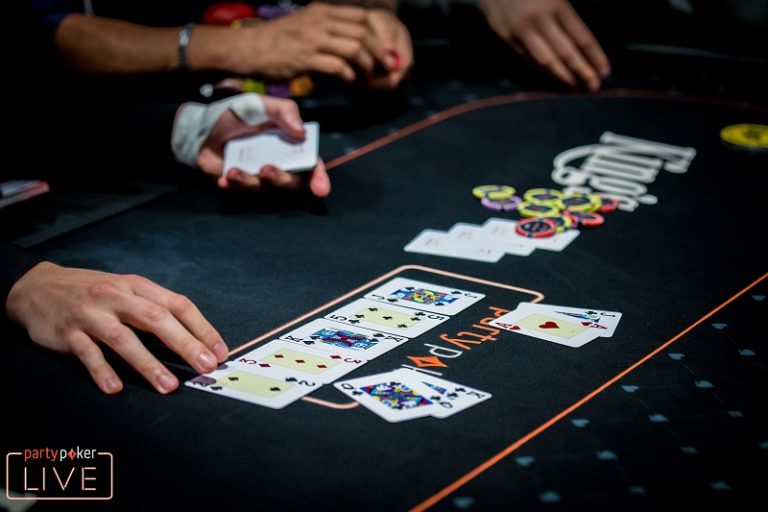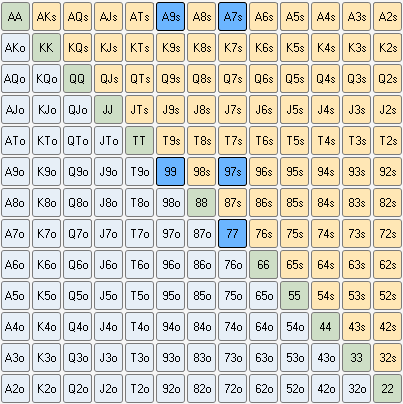Poker When To Check Raise
It won’t get you into trouble but saying raise when it’s just a bet is like holding up a big neon sign saying “I’m a poker novice”. #4- String Betting A string bet is when a player entering his chips into the pot as a bet or raise proceeds to move chips in multiple chip movement, such as dropping chips one at a time or going back to. If your opponent c-bets relatively infrequently, respond by check-raising conservatively. If your opponent c-bets often or uses a small c-bet size, check-raise with a wider-than-usual range. The bet size matters a lot too.
- Poker When To Check Raise Blood Pressure
- Poker Check Raise Sizing
- Poker When To Check Raise Blood Pressure
Check Raise (CR) – the percentage of times a player check-raised when he had the opportunity.
This poker HUD stat helps you to figure out if a player who check-raised you has a monster hand or that’s just part of his routine online poker play. The indicator is also useful when you decide whether to bluff in position – if a pre-flop raiser who likes to check-raise checks a dry flop, be careful.
For accurate reads on check-raises you need a large sample of hands – I begin to put some trust into this stat after at least 1000 hands.
Average CR stats are in the 4-8% range, so you know that an online poker player with 2% CR has a real hand and another player with a CR of 15 often has air.
Examples using Check Raise
/For sake of simplicity we’ll assume all opponents have stacks of about 100BB/
Full ring table, we are in LP with 89s. A player in MP raises the minimum of 2xBB, we call and so does the BB. The flop comes 7 6 A of different suits. The big blind and the preflop raiser both check. Should we check or bet? Let’s look at the stats.
a) Big Blind: VPIP=22 / PFR=8 / Agg Pct=44 / Check Raise=7
PF Raiser: VPIP=19 / PFR=11 / Agg Pct=56 / Check Raise=14 / Flop C-Bet=74
We have an open-ended straight draw, which we should usually bet when in position; however there is a tricky player who can push us out of our draw if we give him the opportunity. There is a lone ace on the flop and the preflop raiser, who likes to C-Bet, knows two things: 1. that we know it is likely that he raised a hand with an ace in it, and 2. we probably would throw away preflop the hands with weak aces up to AJ and would have re-raised him with AK. Knowing all this the tricky opponent decided to check the relatively dry flop? Why?
Well, most probably he is not afraid of draws and doesn’t want to scare us away by betting his good ace. He wants to do his favorite play: check-raise.
So let’s outsmart him and take the free card.
b) Big Blind: VPIP=22 / PFR=8 / Agg Pct=44 / Check Raise=7
PF Raiser: VPIP=19 / PFR=11 / Agg Pct=56 / Check Raise=2 / Flop C-Bet=58
OK, so now the preflop raiser is a solid player who doesn’t like to play it fancy. If he had the ace he would probably had bet to avoid giving free cards. We should stick in a good bet of 2/3 the pot and be happy if the opponents fold. If one or both of them call we still can hit our draw on the turn, plus even if we don’t hit it they will likely check to us and give us the chance to draw the river for free.
Get a poker tracking program like Poker Tracker to put the odds in your favor!
The check raise is often considered a deceptive line, because we take a passive action followed by an aggressive action. It should be a standard part of a poker player’s strategy however. It makes us tougher to play against and can frequently be more profitable than being the initial aggressor because it causes our opponent to invest additional money first, perhaps overextending himself.
Effect of Initiative
Poker When To Check Raise Blood Pressure
Playing as the cold-caller

Hand Selection
- Make the nuts by the river
- Has both 3-cards to a flush and 3-cards to a straight
 is worthy of our consideration for a defend.
is worthy of our consideration for a defend.- If our draw/backdoor-draw can make the nuts by the river then consider check-raising. If we are drawing to something dominated, consider check/calling instead and looking to bluff on a later street. The exception is bone-dry board textures where it is acceptable for us to defend our entire range by check/calling, barring any specific reads.
Sizing
Turn Play
- It’s correct for us to check/fold some hands at least, we can’t be barreling everything.
- Sometimes the turn problems are caused by a misunderstanding regarding flop play. If we are playing the flop correctly we should have some relatively strong draws in our flop check/raising range which can fire any turn regardless of the card. Examples would include nut-flush-draws, or oesds. See the PokerVIP.com training video for more information on this topic.
- Nut-flush-draws (including turned nut-flush-draws. Remember that non-nut-draws will not be raising the flop in most cases).
- Oesds. (Remember that FDs and OESDs are strong enough to barrel on almost all turn cards, regardless of whether the board pairs or a flush-draw completes.)
- Nut gutshots with at least one over. (Gutshots weaker than this can go into our turn check/folding range).
Check-Raising with Initiative

The idea here is that we make use of a tricky play which helps us to defend our checking range. The majority of players will be check/folding way too frequently after they skip their cbet OOP. This is because any time they have a hand they would like to continue with they put it into their cbetting ange. So skipping cbet OOP as the PFR is like holding up a white flag that says “you can bet, I’m definitely folding”.
- Our opponent continues with a well constructed range assuming we cbet, but fires too frequently if we check.
- Our opponent puts additional chips in to the pot which we can win assuming we check.
Poker Check Raise Sizing
It's not uncommon to see a player with a Skip flop cbet and check-raise stat of 2 or 3% (it should be 15%). Skip flop cbet and check-call should be 35% but is often considerably lower.Putting it Together
- Our opponent's tendencies
- The effective stacks
- Our position
- Our opponents position
- Whether we have initiative
- The size of our opponents bet